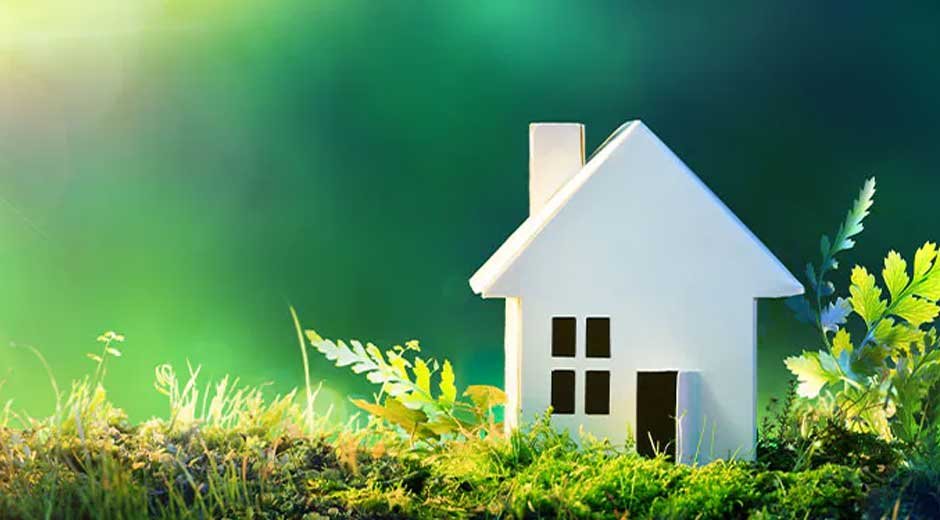As more homeowners embrace sustainability, choosing environmentally friendly materials has become a priority for those who want to reduce their environmental impact while creating healthier living spaces. Eco-friendly materials offer benefits like improved indoor air quality, reduced waste, and long-term savings, but it’s essential to know what to look for when making these choices.
Here’s how you can incorporate sustainable materials into your home without compromising on style or functionality.
Step 1: Choose Certified Materials
When shopping for eco-friendly products, look for certifications like FSC (Forest Stewardship Council) for responsibly sourced wood, Greenguard for low-emission materials, and Energy Star for energy-efficient appliances. These labels indicate that the materials meet strict environmental and health standards, ensuring you’re making sustainable choices.
Step 2: Use Recycled or Upcycled Materials
Recycled or upcycled materials are excellent for reducing waste while adding character to your home. Reclaimed wood for flooring, recycled glass for countertops, or tiles made from post-consumer materials can all be stylish and eco-friendly options. Salvage yards and online platforms often offer affordable, high-quality options that contribute to sustainability while giving your space a unique look.
Step 3: Opt for Low-VOC Paints and Finishes
Traditional paints and finishes can release harmful volatile organic compounds (VOCs) into the air, negatively affecting indoor air quality. Low-VOC or zero-VOC alternatives are healthier for your family and better for the environment. If you’re planning a painting project, consider hiring a professional who specializes in eco-friendly practices. A quick search for a painter decorator near me can connect you with experts who can ensure a high-quality, sustainable finish.
Step 4: Prioritize Renewable Materials
Renewable materials like bamboo, cork, and wool are great options for creating an eco-conscious home. Bamboo, for instance, is a durable and fast-growing alternative to hardwood, while cork provides excellent insulation and soundproofing properties. These materials are not only environmentally friendly but also offer a modern, stylish aesthetic for your home.
Step 5: Invest in Energy-Efficient Windows and Insulation
Reducing energy consumption starts with proper insulation and efficient windows. Double or triple-glazed windows can significantly reduce heat loss, while natural insulation materials like cellulose or sheep’s wool provide sustainable alternatives to synthetic options. These upgrades not only help the planet but also lower your energy bills over time.
Step 6: Source Materials Locally
Using locally sourced materials reduces the carbon footprint associated with transportation and often supports smaller, sustainable businesses in your community. Whether it’s stone, wood, or tiles, locally produced materials can be high-quality and add a regional flair to your home.
Step 7: Repurpose Existing Materials
Before purchasing new materials, consider what you already have that can be repurposed or refinished. Old furniture can be given a second life with some sanding and paint, and leftover materials like tiles or wood can be creatively reused for small DIY projects. Repurposing minimizes waste while adding personal touches to your home.
Step 8: Install Sustainable Flooring
Flooring is a major part of any home upgrade, and eco-friendly options like linoleum (made from natural linseed oil), reclaimed wood, bamboo, or cork are excellent choices. These materials are durable, biodegradable, and often comparable in cost to traditional flooring options.
Step 9: Use Safe Adhesives and Sealants
Adhesives and sealants are often overlooked but can have a significant environmental impact. Many contain harmful chemicals that release toxins into the air. Choosing water-based, non-toxic options ensures better indoor air quality and aligns with sustainable practices.
Step 10: Upgrade to Energy-Efficient Fixtures and Appliances
Replacing outdated appliances and fixtures with energy-efficient models is a practical way to make your home more sustainable. Energy Star-certified appliances, LED lighting, and low-flow fixtures reduce energy and water consumption, helping both the environment and your utility bills.
Final Remarks
Creating an eco-friendly home starts with intentional choices about the materials you use. Certified, renewable, recycled, and locally sourced options provide sustainable solutions for nearly every aspect of a home project. By incorporating these materials, you’re not only reducing your environmental footprint but also creating a healthier, more cost-effective living space.
Every sustainable decision you make brings you closer to a home that is beautiful, functional, and environmentally responsible.


